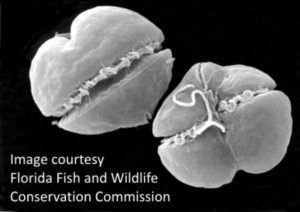Phylum Dinoflagellata | Genus Karenia Rank Species | |
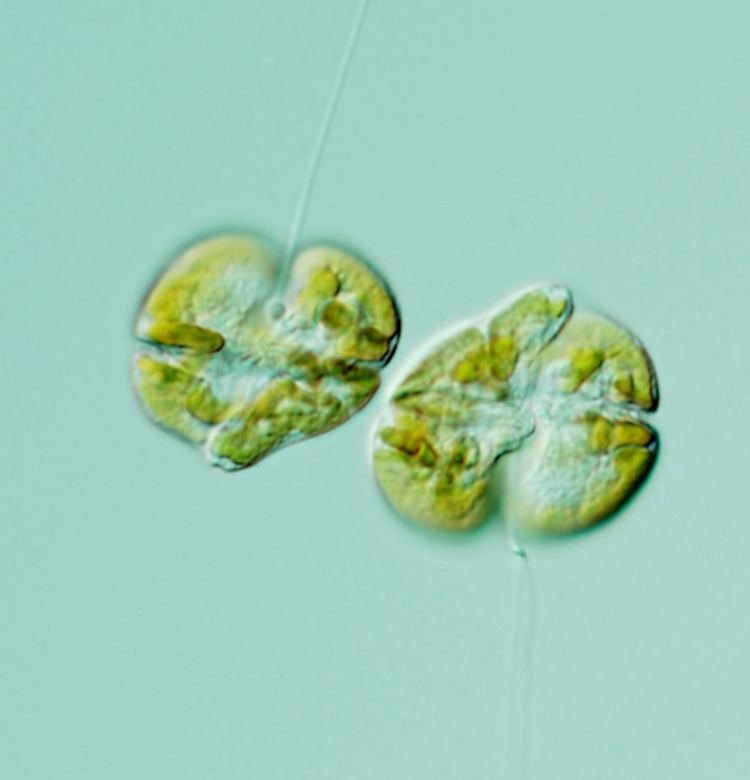 | ||
Similar Karenia, Dinoflagellate, Gymnodinium, Alexandrium, Karlodinium | ||
Chnep watershed summit neurotoxic shellfish poisonings during karenia brevis blooms
Karenia brevis was named for Dr. Karen A. Steidinger in 2001, and was previously known as Gymnodinium breve and Ptychodiscus brevis. Karenia brevis is a marine dinoflagellate common in Gulf of Mexico waters, and is the organism responsible for the "tides" (coastal infestations) termed red tides that affect Gulf coasts—of Florida and Texas in the U.S., and nearby coasts of Mexico. It is the source organism for various toxins found present during such "tides," including the eponymously named brevetoxins.
Contents
- Chnep watershed summit neurotoxic shellfish poisonings during karenia brevis blooms
- Karenia brevis
- Description
- Ecology and distribution
- Detection
- References
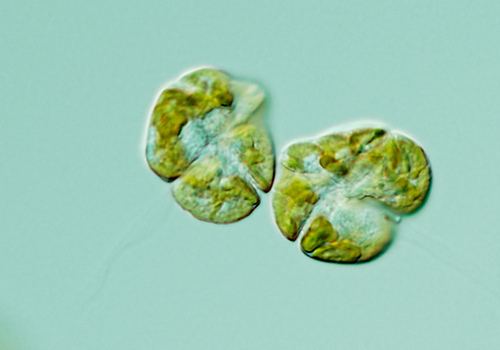
Karenia brevis
Description
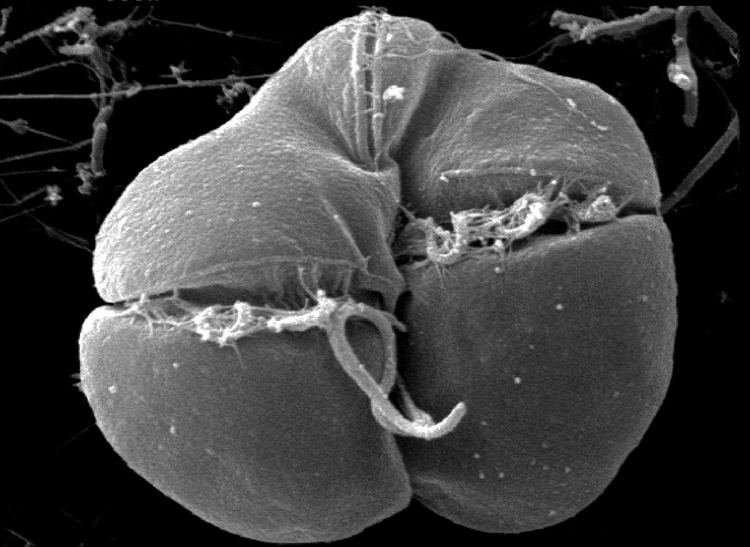
K. brevis is a microscopic, single-celled, photosynthetic organism that can "bloom" (see algal bloom) frequently along Florida, Texas, and Mexican coastal waters. Each cell has two flagella that allow it to move through the water in a spinning motion. K. brevis naturally produces a suite of potent neurotoxins collectively called brevetoxins, which cause gastrointestinal and neurological problems in other organisms and are responsible for large die-offs of marine organisms and seabirds. K. brevis is unarmored, and does not contain peridinin. Cells are between 20 and 40 μm in diameter.
Ecology and distribution
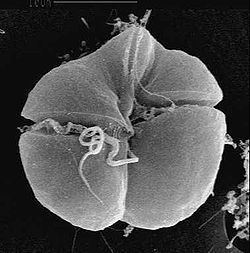
In its normal environment, K. brevis will move in the direction of greater light and against the direction of gravity, which will tend to keep the organism at the surface of whatever body of water it is suspended within. Cells are thought to require photosynthesis to obtain nutrition. Its swimming speed is about one metre per hour. K. brevis is the causative agent of Red Tide, when K. brevis has grown to very high concentrations and the water can take on a reddish or pinkish coloration. The region around southwest Florida is one of the major hotspots for red tide blooms. Red Tide outbreaks have been known to occur since the Spanish explorers of the 15th century, although not nearly as common, or for as lengthy a duration as now. Some sources say Florida red tide blooms are about 10- to 15-fold more abundant than they were 50 years ago. Algal species that have harmful effects on either the environment or human health are commonly known as Harmful Algal Blooms (HABs). HABs are harmful to organisms that share the same habitat as them, though only when in high concentrations.
Detection
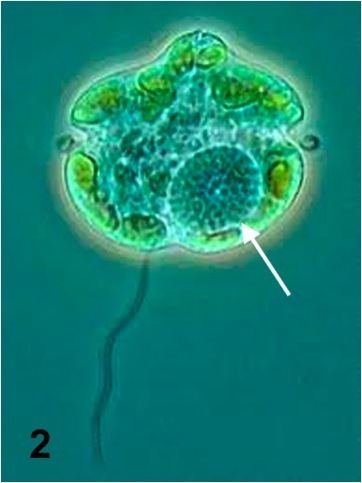
Traditional methods for the detection of K. brevis are based on microscopy or pigment analysis. These are time-consuming, and typically require a skilled microscopist for identification. Cultivation-based identification is extremely difficult and can take several months. A molecular, real-time PCR-based approach for sensitive and accurate detection of K. brevis cells in marine environments has therefore been developed. Another technique for the detection of K. brevis is multiwavelength spectroscopy, which uses a model-based examination of UV-vis spectra. Methods of detection using satellite spectroscopy have also been developed. This particular protist is known to be harmful to humans, large fish, and other marine mammals. It has been found that the survival of scleractinian coral is negatively affected by brevetoxin. Scleractinian coral exhibits decreased rates of respiration when there is a high concentration of K. brevis.
